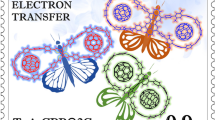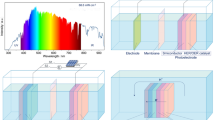Abstract
The suitability of di-thiosubstituted derivatives of formic acid dimer, both in hydroxyl and carbonyl position, as possible hydrogen-bonded electron transfer linkers in a hypothetical donor–acceptor dyad for photovoltaic cells and artificial photosynthesis reactors has been studied from a theoretical point of view. To this purpose, the valence singlet electronic excited states of the four possible di-thiosubstituted isomers have been characterized through multi-state complete active space second-order perturbation theory (MS-CASPT2). These hydrogen-bonded systems present electronic spectra consisting of nπ* and ππ* excitations, both intra- and intermonomer. The eventual comparison of the calculated spectroscopic characteristics of the isolated hydrogen-bonded linkers with the experimental spectrum of the chromophore in a donor–acceptor dyad could allow establishing whether the linker would compete with the electron donor in the photon absorption process. Additionally, the analysis of the structural changes undergone by these species upon electronic excitation to the S1 would allow determining whether the population of this state of the linker upon UV–vis light absorption could compromise the formation of the charge transfer complex, key in the performance of photovoltaic devices.





Similar content being viewed by others
References
Balzani V, Credi A, Venturi M (2008) Chemsuschem 1:26
D’Souza F, Ito O (2012) Chem Soc Rev 41:86
Beckers EHA, Chen Z, Meskers SCJ, Jonkheijm P, Schenning APHJ, Li X-Q, Osswald P, Wuerthner F, Janssen RAJJ (2006) Phys Chem B 110:16967
Sanchez L, Sierra M, Martin N, Myles AJ, Dale TJ, Rebek J, Seitz W, Guldi DM (2006) Angew Chem Int Ed 45:4637
Deibel C, Strobel T, Dyakonov V (2010) Adv Mater 22:4097
Fuoss M, Accascina F (1959) Electrolytic conductance. Interscience, New York
Sreearunothai P, Morteani AC, Avilov I, Cornil J, Beljonne D, Friend RH, Phillips RT, Silva C, Herz LM (2006) Phys Rev Lett 96:117403
Segura M, Sanchez L, de Mendoza J, Martin N, Guldi DMJ (2003) Am Chem Soc 125:15093
Sessler JL, Wang B, Harriman AJ (1993) Am Chem Soc 115:10418
Yu M-L, Wang S-M, Feng K, Khoury T, Crossley MJ, Fan Y, Zhang J-P, Tung C-H, Wu L-ZJ (2011) Phys Chem C 115:23634
Becke ADJ (1993) Chem Phys 98:5648
Lee CT, Yang WT, Parr RG (1988) Phys Rev B 37:785
Hehre WJ, Radom L, Schleyer PvR, Pople JA (1986) Ab initio molecular orbital theory. Wiley Interscience, New York
Jonas V, Frenking G (1991) Chem Phys Lett 177:175
Timoshkin A, Frenking GJ (2000) Chem Phys 113:8430
González L, Mó O, Yáñez M (1996) Chem Phys Lett 263:407
Roos BO, Taylor PR, Siegbahn PEM (1980) Chem Phys 48:157
Widmark PO, Malmqvist PÅ, Roos BO (1990) Theor Chim Acta 77:291
Finley J, Malmqvist PA, Roos BO, Serrano-Andres L (1998) Chem Phys Lett 288:299
Roos BO, Andersson K (1995) Chem Phys Lett 245:215
Woon DE, Dunning TH Jr (1993) J Chem Phys 98:1358
Dunning TH Jr (1007) J Chem Phys 1989:90
Kendall RA, Dunning TH Jr, Harrison RJJ (1992) Chem Phys 96:6796
Bader RFW (1990) Atoms in molecules: a quantum theory. Clarendon Press, Oxford
Frisch MJ et al (2009) Gaussian 09, Revision A.1. Gaussian, Inc., Wallingford
Aquilante F et al (2010) J Comput Chem 31:224
Cimas A, Mó O, Yáñez M, Martin N, Corral I (2010) Phys Chem Chem Phys 12:13037
Acknowledgments
This work has been partially supported by the DGI Projects No. CTQ2009-13129, by the Project MADRISOLAR2, Ref.: S2009PPQ/1533 of the Comunidad Autónoma de Madrid, and by Consolider on Molecular Nanoscience CSC2007-00010. A generous allocation of computing time at the CCC of the UAM is also acknowledged. R.V. and A.C. gratefully acknowledge financial support from the Erasmus Mundus Programe (FPA 2010-0147) and a Ciência 2008 contract from FCT (Lisbon, Portugal), respectively.
Author information
Authors and Affiliations
Corresponding author
Additional information
This paper is dedicated to Prof. Ria Broer, a good scientist and a better friend, on occasion of her 60th birthday.
Published as part of the special collection of articles derived from the 8th Congress on Electronic Structure: Principles and Applications (ESPA 2012).
Rights and permissions
About this article
Cite this article
Verzeni, R., Mó, O., Cimas, A. et al. MS-CASPT2 study of the low-lying electronic excited states of di-thiosubstituted formic acid dimers. Theor Chem Acc 132, 1338 (2013). https://doi.org/10.1007/s00214-013-1338-8
Received:
Accepted:
Published:
DOI: https://doi.org/10.1007/s00214-013-1338-8




